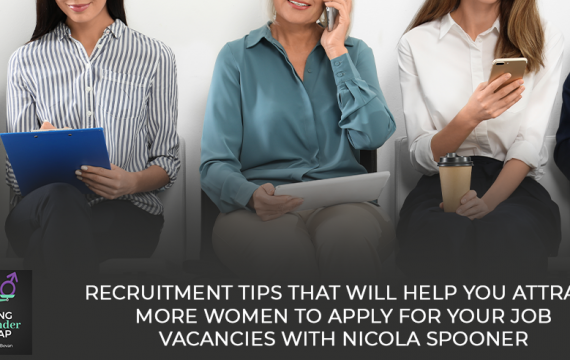There’s a lot of talk on how to close the gender pay gap but what are companies actually doing to make it happen? In this episode, Head of Digital Transformation, Rachel Marsh, shares what Fujitsu has been doing to stay ahead in terms of diversity, equity, and inclusion. She chats with Sherry Bevan on what’s worked and what hasn’t on their end. Rachel also shares how they keep track of their progress and what other companies can do to continually empower and promote the closing of the gender pay gap. They also touch on flexible working, and their research on the ethnicity pay gap. Stay tuned and get value from this insightful discussion on how to become a more proactive and progressive organization for your employees.
—
Listen to the podcast here:
https://oembed.libsyn.com/embed?item_id=21076673
How Fujitsu Is Working Towards Closing The Gender Pay Gap With Rachel Marsh
In this episode, we’re going to be exploring some of the initiatives that Fujitsu has implemented in order to make progress on closing the gender pay gap. To do this, I’m delighted to be talking to Rachel Marsh, who’s Head of Digital Transformation at Fujitsu. We’re going to be looking at how Fujitsu has tackled the gender pay gap and the effectiveness of those initiatives. Rachel, very warm welcome to you. Thank you so much for joining me.
Thank you very much.
To get us started and to set the scene and put this into context, could you tell us a bit more about your role at Fujitsu?
I’m Rachel Marsh. I’m the Head of DX at Fujitsu. What does that mean? It’s around enabling digital transformation for our customers. We have a group of people who work with existing or new customers to provide insight, advice and guidance. What we were trying to do is work with our customers to see how we can inspire them to think and act differently, to deliver business and social impact through the innovative use of technology.
Sometimes that might be technologies we can bring, or they already have systems, services and operations, and it’s how they can expand that use. For example, getting better value out of the data they have to inform how they work, generating collaboration in the way they work across their business or their ecosystem, helping them implement change and transformation, and helping them roadmap where they’re trying to go. It’s anything in that spectrum. That’s what we do.
Since gender pay gap reporting was first introduced, I know you’ve made progress in reducing the gender pay gap. I’d love to hear from you about some of the initiatives you’ve tried and how they’ve worked.
We’ve made a decision to publish early. As soon as gender pay gap reporting came in, we were in the first 1% to publish. Our results at the time, we had a median gap of 17.9. We had a lot of work to do. Over the years, we have made improvements. We’ve published our latest report and we’re at 11.8%. It’s a significant reduction but still more to do. In terms of the changes, we’ve put in place a number of initiatives. Firstly, by doing the reporting, it means we’re measuring and tracking what we’re doing.
Work your way in consideration of the work you do, the team you’re a part of, the customer you’re on, and your own preferences.
We’re holding ourselves accountable to our employees and to the public. Putting that spotlight on it has helped in the first instance. We then set out an action plan that we have built on and developed every year. We focused on four areas around how we recruit, retain, enable, and also look across this pay specifically in terms of equality at different levels. Those four areas plus the data we drive help us determine the actions, measure those actions, and see the results and the outcome.
That increase or decrease depending on which way you look at them is a huge change. Although you look at the bare numbers, it maybe doesn’t mean much. In order to achieve that, you’ve put a lot of hard work into that. You’re right. The first thing you’ve got to do is to report and measure because you can only manage what you measure. What about some of the initiatives that you’ve tried? What’s worked well for you to help you reduce your pay gap?
A number of things. If we look at recruitment, sometimes we’re working with all of our supply chains in recruitment to try and get equal lists. We’re hiring shortlists that have equality of men and women in them to even consider into roles. We’ve looked at how we advertise our roles, the language we use, the style, and change them quite significantly. We now have a single standard template that all roles must use.
We’re reducing the number of bullet points, changing the language, the style and the description to be much more inclusive. We’ve also looked at our hiring managers and the hiring approach. We have done some training for our hiring managers to support them in it, but also looking at things like having mixed panels, more than a single person so that you have a much more balanced and inclusive view when you are recruiting.
In terms of retention, we’ve put a lot of effort into the programs we do to address women’s careers and support them so that we don’t get to a retention situation. Through all of our programs, we can see a real shift in that.
By April of 2021, our attrition for female roles dropped below that of men. We’ve seen that change. A lot of the changes over the last couple of years and our response to COVID have helped in that as well. We’ve been very flexible and supportive in that space. In terms of enabling people, we have a number of things running. We have a women’s business network that’s been running for a number of years.

We have executive sponsorship, co-chairs from the business. That’s very voluntary across the group. We have lots of initiatives. They will run events, training, get-togethers, networking sessions, and also some targeted programs.
We have two specific talent programs, one for our earlier career females. Those who are in the beginning are looking for more mentoring advice and guidance. That’s called Future Me, and one called Leading Lights, which is about helping women get into those more senior positions. All of those things together are adding up to making the change. Each year, we review what we’re doing, the impact it’s having, measure it and then tweak the next level.
You are constantly reviewing, refining, and continuing to do more to close that gender pay gap. What do you think has had the biggest impact? What’s made the most difference?
It’s a daily conversation now. It used to we want to have a program and initiatives, and it gets spoken about. Now it’s something that’s talked about all the time. It’s become a very common conversation. As an individual, personally, the things that have had an impact where I’ve either taken part or been a participant have been some of our talent programs. When I speak to people who’ve joined those, they’ve rated them highly.
For example, our Future Me program aimed at earlier career talent is recognizing the coaching and advice people might want, particularly for females. We’ve picked nine topics. It’s a structured mentoring program. It might be how to have your voice heard in meetings, networking, presenting, a number of those kinds of things where we can talk through. I’m a mentor in the Future Me program. I’ve worked with the ladies there. We talk through each topic. We share some actual insights, research studies, practical advice, and also about my own experiences. I’ll ask them about the situations they’re going through and explain what they might try.
The next time we meet, we’ll talk about the things they’ve tried and how did it work. It’s a supported learning journey around topics that we know have value at that point. The feedback there is good. We’re on another year of running that program. The Leading Lights program as well is supporting women to get into more senior roles. If we look at our gender pay gap reporting, where we can see the biggest impact for many companies is that the proportion of women in more senior roles is definitely smaller.
How can we support people in that career through the business? We have good figures at the lower ends, and we’re improving at the upper. How do we move through the middle of it is now going to be our next focus as well. It’s those specific talent programs. They’re more than just an event, it’s a continued conversation. It becomes very personal to the individual. Those are the things I get feedback from people. They are valued. More than anything, it’s the fact that this is a continuous and consistent conversation.
You mentioned there that it’s now become a daily conversation. It’s being talked about all the time. In other companies, I’ve heard people say that when it gets to that point, sometimes they worry about it. Is it going to turn people off having the conversation because it’s talked about all the time?
Certainly, that can happen. There have been points where you start feeling, “Is it too much? Do we need to ensure we’re looking across the rest of our populations?” We have a good program of initiatives across all types of diversity and support all talent in our business in how they progress. We’ve looked at how we have supporting conversations and change our performance management type conversations with every individual. We are making sure we’re trying to be balanced, but there have been times where you could see some of the reactions among people, both men and women of, “Is this too much?”
It’s about bringing it back to the personal value and the business value, and ensuring we are fair and equal. That way, we can stand up to, “Is it too much? Is it fair? Is it appropriate?” We have internal processes for let’s say somebody gets promoted or changed. In the paperwork you submit, ask the question, “What impact will this have?” Along the way, you’ll continue to be reminded to think about it. We make decisions without thinking about the broader consequences. When you then pause to think about them, it puts it front of mind, “Am I doing anything that helps or am I doing anything that’s detrimental?”
It’s those little constant reminders. People with the very best intentions will forget or do something that’s not quite appropriate, but it’s having those constant reminders to give you the opportunity to take that step back. With forced homeworking during COVID and locked down, how has that affected your gender pay gap or your female talent?
We’ve published reports every year. Our numerical results for 2021 are pretty much unchanged from 2020. We’ve had a drop of 0.2 on our median numbers and an increase of 0.1 on our mean. They’ve stayed the same, it has not changed. Considering the several months, to stay the same, I find it quite phenomenal. As a company, our response across the globe as an individual employee of the company was brilliant.
As an example, we already have policies in place to support carers’ leave. We instantly published that carer’s leave is available to everyone for whatever reason they need to take time off, whether it’s to look after children or elderly people themselves. Also, as soon as we rolled into January of 2021 and we realized we were going straight into another lockdown, day two of the year, there was another note out, “We’re going to do the five days again this 2021.” As a working mother with children in lockdown, I’ve had ten extra days of paid leave to support the carer’s leave during 2020 and 2021. For me individually, that’s a massive thing that’s helped.
We’ve also said straight away that everyone can work from home. As an organization, we’re a technology organization. As soon as it was looking likely, we started testing if that was going to be possible. It has been possible. All of our employees are operating fully from home. The approach from everyone was employee first, support our customers, everything else, don’t worry. That very flexible approach has continued. We’ve formalized it more now. A lot of companies have said, “You must come back to the office or you will work at home.”
Our stance, we call it Work Your Way. Every individual can decide what’s right for them. Also, a lot of the time, we might work with other teams or customers. It’s not just an individual choice. It’s a guided framework to look at, why do you need to connect, what do you need to be doing work-wise, and what’s your home situation. Not everyone has the home environment that supports that and personal desires. It’s that balanced view. You keep relooking at that through the year and making decisions that suit you, the work you’re doing, and the customer and team you’re a part of. That’s our approach going forward.
All of those things have meant that for everyone but also for working women, we’re seeing that approach of flexibility and support. Care has come out strongly. It’s come back in our employee engagement type surveys that employees have seen that increase in feeling cared for by the company and supported through this period. The fact that our reporting figures for 2021 stayed the same with everything else going on, I feel positive about what the last months have been like as an employee of Fujitsu and how they’ve responded.
It’s one of the key things moving forward as more organizations are following your approach to having that flexibility about how often you work from home. We see in the press that some organizations are having a very black and white, “You must be in the office five days a week. You must be in the office at least three days a week.” With organizations like yours who are taking that more flexible “work your way” approach, longer-term, it means you’re going to attract more of the best talent regardless of their gender or their ethnicity. People want that approach now from an employer.
You bring your whole self to work, and that is welcomed. That diversity of behaviour, thinking, and experience is valued.
In terms of the spread geographically, therefore, where you can appeal to employees and people are making choices. We’ve seen in the press in the market, people are making choices about where they live. As you go through your career, different choices are important to you according to what’s happening in your life at that point. The fact now is that you’re able to make more choices. I’ve got people who have moved near a family, moved away from cities, and changed their home base completely. People have changed the type of work. People are rethinking their careers in terms of training and development as well. All of those things are more possible. We want to show that we’re supporting that.
At the end of the day, we’re a business. We have customers to support, and it has to be done in context, which is why we’re not saying it’s black or white. We’re saying, “Work your way in consideration of the work you do, the team you’re a part of, the customer you’re on, and your own preferences.” In the meantime, our buildings and our locations, we’ve got a bit of a hub strategy in terms of key offices and buildings where we will have a presence. We are already refurbishing some of them moving to more collaborative working spaces. We’ve continued that program.
As we’ve started reopening our offices, we’re opening our main hubs first, and putting effort into some of the refurbishments in those areas as well. If I go into our London head office, there are hot desks available to book, but there are less desks because it’s more a place where you’ll go for meetings. There are more circular tables or meeting spaces rather than necessarily meeting rooms for more formal and informal types of working spaces.
These are the things we’ve done. If you do go in, it’s supportive. If you don’t, how do you mix the half in and half out? We’re working hard in terms of our hybrid space as well. With my own teams, we’re having team meetings. Some people are there. Some people aren’t. How can we make everything work so that everyone is still included? We’re not there yet but we’re all learning.
Some of what you mentioned there is reflected in the white paper that I’m publishing on the impact of the hybrid work model on the gender pay gap. It’s about looking at these things and being intentional about how you implement and what to implement rather than just being a bit more ad hoc about it. Fujitsu has done lots of great work over the past years to reduce that gender pay gap. What have been your key learnings?
That it is a continual and long process. It takes concerted effort. It’s also helped and it’s reflected in other areas. For example, we have published our ethnicity pay gap. We made the decision to publish early. The learnings of the work we’ve done over the years were able to apply to other areas as well as we continue to try and improve. We have a phrase, “Being completely you so that you bring your whole self to work.” That is welcomed. That diversity of behavior thinking experience is valued.

What you’ve done at Fujitsu is great. You’ve been able to see those gaps close. It’s demonstrated to other organizations that if you set about making progress, you can achieve it even though perhaps at first it might seem like it’s hard work and that it’s taking time. How much you’ve reduced your pay gap bias is quite significant.
It has been good and it’s nice to see. It also shows we still got quite a way to go and we haven’t got it all right yet. We are continuing to work on our programs. We’re seeing a shift in our more senior positions but we’ve got a long way to go. For example, we’ve seen some women from our Leading Lights program, which was supporting those in the most senior and move into key leadership positions. We’re seeing promotion opportunities for those in the younger space. We measure those things. It takes time to see the results and the impact. It’s not attributable to the fact that they’ve been in a program. There’s so much more that goes on, but seeing the order of these things are adding up to making a difference.
We have to continue to do that work, particularly for our middle level, those quarters 2 and 3 of both salary or grading, however you look at it in your organization. That’s important that we keep doing that. Building more data, we’ve made a point over the years of enhancing the data that people are voluntarily able to add about themselves so that we can track more.
For example, with ethnicity, we’ve been pushing and sharing that people can add their ethnicity data. They don’t have to but we’re encouraging everyone to do it by talking about the reasons why and the value. We allow people to pick multiple categories and what they prefer not to say, or they don’t have to participate. Through giving examples, we’re encouraging all of these things that when we run programs and we’re in schemes, we’re tracking it all so that we have more data into helping us determine the next set of actions.
It’s fantastic and I’m very positive. To bring us to a conclusion, Rachel, if people wanted to get in touch with you and talk about what you’ve done at Fujitsu, how can they best do that?
I’m on LinkedIn. I’m happy to be contacted and continue this conversation. Fujitsu also actively tries and plays a part where we are keen to learn from other people. We’re happy to share the learning that we’ve gone through, both good and bad. We do not get everything right all the time. That’s a part of the continued conversation of helping overall the situation improve for everybody. It speaks to the values that the company have that we express in how we operate. That resonates for me personally. I’m happy to be contacted.
Thank you so much, Rachel.
—
Thank you so much to my guest, Rachel Marsh, who’s Head of Digital Transformation at Fujitsu. I enjoyed talking about how Fujitsu has been tackling the gender pay gap and doing it successfully.
I hope you’ve enjoyed this episode. You can find more episodes at SherryBevan.co.uk/podcast. If you are thinking about or you’ve already introduced a hybrid work model into your organization, you’ll find it useful to download a copy of my white paper that I’ve published on the website as well. If that sparks a thought in your mind, book an exploratory call with me and you’ll have the opportunity to ask any questions you have about the work I do at technology companies on attracting, developing, and retaining your female talent so you can close the gender pay gap.
Email me at Sherry@SherryBevan.co.uk to book your call. Thank you.
Important Links:
- Fujitsu
- LinkedIn – Rachel Marsh
- Request a copy of the white paper on the Impact of the Hybrid Revolution on the Gender Pay Gap in Technology
- Email me – Sherry@SherryBevan.co.uk
About Rachel Marsh
 Rachel is Head of Digital Transformation at Fujitsu.
Rachel is Head of Digital Transformation at Fujitsu.






 Nicola Spooner of Nicola Spooner Consulting is a recruitment expert specialising in recruiting in project professionals in the legal sector.
Nicola Spooner of Nicola Spooner Consulting is a recruitment expert specialising in recruiting in project professionals in the legal sector.